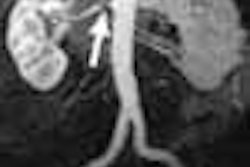MRI Principles by Donald G. Mitchell and Mark Cohen, 2nd edition
Elsevier Science, St. Louis, 2004, $69.95.
Understanding the formation of the MR image can be a daunting task, but once it is mastered, it can lead to a greater appreciation of the nuances of this modality, as well as the ability to generate the highest quality diagnostic images. MRI Principles is an important step towards an understanding of MRI physics, principles, and image formation without demanding a background in math or physics.
This second edition features additional chapters on newer techniques such as functional neuroimaging, contrast enhanced angiography, and cardiovascular applications. By enlisting the help of Dr. Cohen from the University of California, Los Angeles, Dr. Mitchell has improved the scope and cohesiveness of the text. Updated figures and legends communicate ideas clearly while also supplementing the text.
The physics of protons and their angular momentum, interactions with magnetic fields, generation and timing of pulse sequences, and image formation are broken down into useful chunks and described in clear, non-technical language. These concepts are carefully illustrated and summarized at the end of each chapter in a section titled "Essential Points to Remember."
Most of the 27 chapters are under 20 pages long for easy viewing and reviewing, if necessary. Topics covered include chemistry and physics, technical parameters (signal-to-noise ratio; spatial resolution), instrument specifics, artifacts, and clinical MRI techniques.
The point of each chapter is to help the reader understand these principles in order to optimize technique and benefit patients. Thankfully, equations and units have, for the most part, been omitted and patient care has been emphasized instead.
The book does have a few weaknesses, most notably the lack of coverage of breast MRI. This area will grow significantly over the next several years and will definitely develop into a powerful weapon in the fight against breast cancer.
MRI Principles is an excellent introductory text for radiologists who desire to comprehend the physics of MRI without the burden of complicated equations.
By Dr. Danny DonovanAuntMinnie.com contributing writer
July 1, 2004
Dr. Danny Donovan is a fourth year diagnostic radiology resident at the University of Tennessee/Methodist Hospital in Memphis. He has accepted an appointment as a clinical cardiovascular imaging fellow and postdoctoral scholar in the department of radiology at Stanford University in Stanford, CA.
The opinions or assertions contained herein are the private views of the author and are not to be construed as official or as reflecting the views of the Department of Defense.
The opinions expressed in this review are those of the author, and do not necessarily reflect the views of AuntMinnie.com.
Copyright © 2004 AuntMinnie.com


.fFmgij6Hin.png?auto=compress%2Cformat&fit=crop&h=100&q=70&w=100)





.fFmgij6Hin.png?auto=compress%2Cformat&fit=crop&h=167&q=70&w=250)











